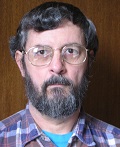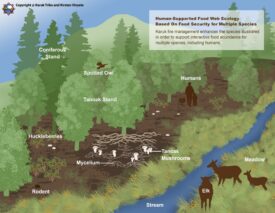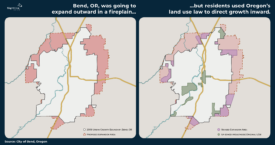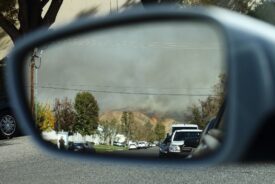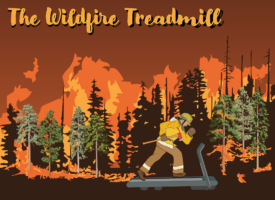Fifty years ago this last month, Silent Spring hit the shelves. The book that is sometimes credited with sparking the environmental movement in the United States pitted author Rachel Carson against the manufacturers of dangerous pesticides. Although Carson’s book fundamentally changed the public debate about chemical pollution, it has taken decades for many of her recommendations to gain the force of law. Now, five decades later, the revolution launched by Silent Spring takes another step toward completion.
As of August 2012, use of the pesticide Endosulfan is no longer allowed on a range of food crops, such as cherries, plums, and apricots, which are all tree fruits grown in the Pacific Northwest. Endosulfan will still be used for a few more years on many other crops, including apples and potatoes, but this marks the first step in phasing out a pesticide with some truly nasty side effects: it is recognized as a neurotoxin; an endocrine disruptor that can damage a variety of biological systems (by altering the body’s production of hormones); and a “bio-accumulative” toxic substance so persistent that it is transported by winds, currents, and sea life, and found even in the Arctic, thousands of miles from where it might be used.
Endosulfan cuts a big swath through the Northwest, and the phase-out marks important progress for the region. Washington leads the nation in cherry production, while Oregon and Idaho are the third and fifth biggest producers respectively. Endosulfan cannot be used on the region’s next crop of cherries and other stone fruits (fruits with pits), and by 2016 will be prohibited on the Northwest’s apples and potatoes as well.
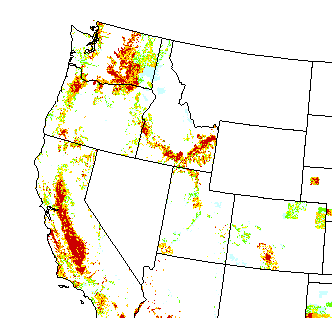
Endosulfan use (highest rates in red) is concentrated in the Northwest’s key agricultural zones such as Washington’s Columbia plateau and Idaho’s Snake River region. (Source: US Geological Survey)
Last year, Sightline reported on the woefully slow phase-out of two organophosphate pesticides used on apples in the Northwest and other locations. Although scientists had understood the chemicals’ very serious toxicity since World War II, it took years of citizen action and lawsuits before governing bodies decided to ban the chemicals. Unfortunately, the regulation of Endosulfan shows a similar pattern of foot-dragging and deference to the chemical industry, though the details differ.
Pesticides are, of course, designed to kill living things, namely insects, and they can have side effects for other species. Both children and adults sometimes consume pesticide residues on produce or processed foods, such as juices or canned fruits. Pesticides also pose health risks for the farm workers who apply them, as well as to members of workers’ families when residual pesticides that cling to workers’ clothing or drift from field spraying end up in homes or soil, where spouses and children may be exposed.
Endosulfan was first approved for use in the US in 1954 and today it is one of most abundant pesticides in the global atmosphere. Although many other organochlorines were banned in the 1970s, Endosulfan concentrations have been increasing since the 1980s in the Arctic and other remote ecosystems, according to a 2009 study by British and Canadian researchers. Because it concentrates as it moves up the food chain, including in marine mammals, Endosulfan also ends up in the bodies of Arctic tribal members.
In her ground-breaking 1962 book Silent Spring, Rachel Carson called for tighter regulation of pesticides. Among the chemical families she flagged were organochlorines, including DDT, Heptachlor, and similar chemicals that are toxic, that accumulate in fat cells (and therefore move up the food chain), and that persist for a long time because they do not readily break down in nature. In 1988, the US Environmental Protection Agency (EPA) ended use of Heptachlor in homes, buildings, and on food crops. Yet its chemical cousin Endosulfan is still in use. Shown below are the chemical structures of Endosulfan and Heptachlor:
In the 1980s and 90s, Congress amended legislation on pesticide regulation, requiring scientific reevaluation of pesticides approved decades earlier, and tightening standards for evaluating pesticide risks. In 2000, EPA halted the use of Endosulfan in homes and gardens. Then in 2002, the EPA prohibited use on a few crops in order to reduce risks to children, the most sensitive group, from consuming foods with pesticide residues. All the same, Endosulfan use continued on a variety of crops. The map below shows that areas with the chemical’s highest usage rates include several places in the Northwest, including locations in Oregon and Washington where apples and other tree fruits are grown, and around the Snake River in Idaho, where potatoes are a major crop.
In late 2007, EPA reevaluated Endosulfan risks, based in part on new data the agency requested from chemical companies. Although the agency expressed its concern about risks to pesticide workers and to wildlife, it allowed continued use of the chemical pending a public comment period.
In February 2008, a combination of environmental, consumer, and farm worker organizations petitioned EPA to ban the pesticide, with health advocates and Arctic tribes filing letters of support. And then in July 2008, a coalition including the United Farm Workers, AFL-CIO, Alaska Community Action on Toxics, and other labor and environmental organizations sued EPA, on the grounds that the Agency had failed to consider the full risks of Endosulfan in allowing its continued use.
Finally, in November 2010, the new EPA administration concluded that Endosulfan’s significant risks to wildlife and agricultural workers outweighed its limited benefits nationwide. The Agency negotiated an agreement to phase out Endosulfan over several years with chemical companies, including the last US manufacturer.
The phase-out is designed to give crop growers time to find alternatives to Endosulfan. As a practical matter, the negotiated settlement avoids chemical industry litigation, which would likely delay action by EPA for years longer. Under the agreed-upon phase-out, Endosulfan will be prohibited on apples and potatoes after July 31, 2015, and all remaining uses of Endosulfan in the US will be cancelled on July 31, 2016.
The US phase-out is broadly consistent with action in Canada. In February 2011, Health Canada announced its own phase-out: The last date for use on many crops was set at the end of 2010 (which prevented use during spring 2011). The last use on many more—including apples, grapes and pears—was set at the end of 2012; and the last date for use on all crops, including potatoes, was set at the end of 2016.
In addition, in April 2011 the Stockholm Convention on Persistent Organic Pollutants, a global treaty administered by the United Nations Environmental Programme, added Endosulfan to its list of substances to be banned. Most uses of Endosulfan are scheduled to end in summer 2012, with all uses to be phased out by 2017.
For the next few years, however, Endosulfan is still applied in the Northwest. The EPA estimated uses during 2006 in the US Northwest, including 31,000 pounds on apples, 42,000 pounds on pears, and 11,000 pounds on potatoes. It has been 50 years since Rachel Carson’s Silent Spring called attention to the dangers of pesticides like Endosulfan. It’s taken considerable effort by active citizens, but within a few years, Endosulfan’s use may be ended internationally. Its absence will be welcomed by farm workers, tribes, residents of the Northwest, and eaters everywhere. Endosulfan’s cancellation will also add another jewel to the crown of Rachel Carson’s legacy.
John Abbotts is a former Sightline research consultant and current volunteer who occasionally submits material that Sightline staff turn into blog posts.

